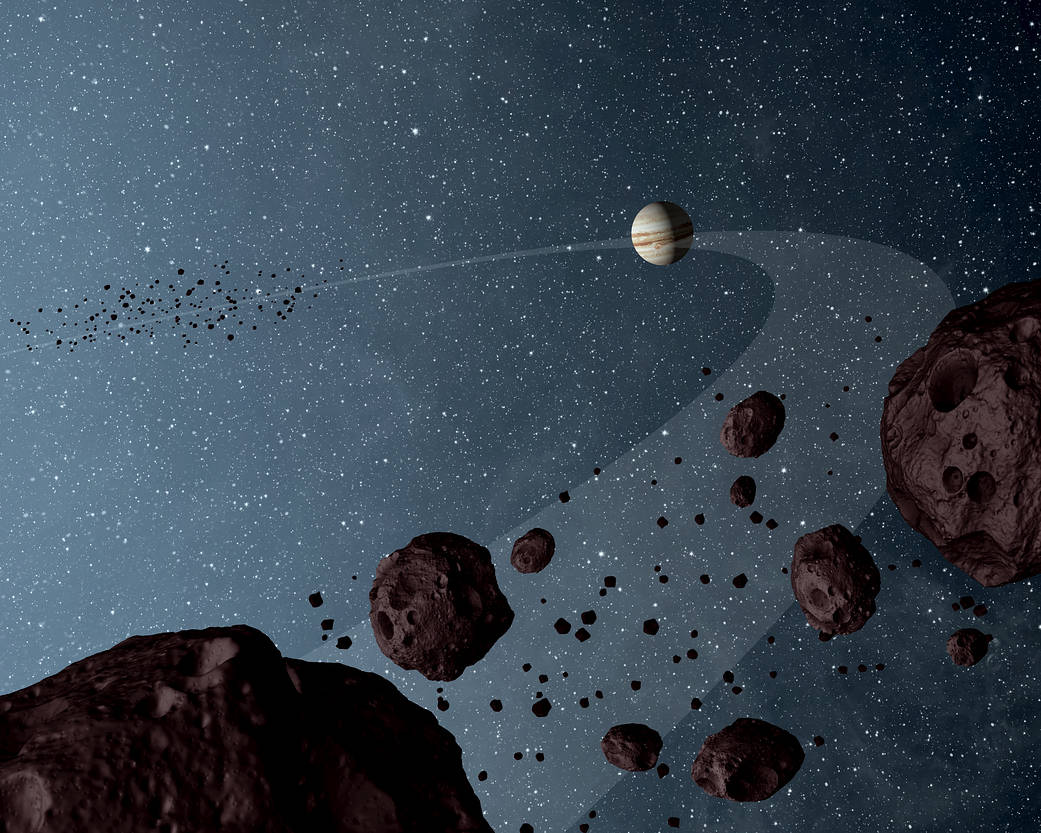Comments
- No comments found

Lucy probe is scheduled to launch on October 16th, 2021 atop a United Launch Alliance (ULA) Atlas V rocket for a 12-year long tour of the solar system.
Let’s take a closer look at Lucy, including what NASA hopes she will accomplish on her 12-year mission.
When looking up at the night sky, it’s clear there is much more to the universe than humanity can even hope to understand. People have visited the moon and sent probes and robots to the furthest reaches of the solar system and beyond, but there is still so much to discover right here at home.
NASA is starting to explore things within the solar system with a mission to examine the asteroid belt. Let’s take a closer look at NASA’s Lucy probe, including when it is supposed to launch and what it’s hoping to accomplish with this 12-year mission.
Lucy is the name of a fossilized humanoid skeleton that increased anthropologists’ understanding of human genetics when she was first unearthed in 1974. Researchers discovered Lucy’s remains in Ethiopia and identified her as Australopithecus afarensis, one of the earliest known human ancestors. Now, Lucy will be travelling to the stars — or rather, a spacecraft that bears her name will take a trip to the asteroid belt.
Lucky is scheduled to launch atop a United Launch Alliance (ULA) Atlas V rocket on Oct. 16, 2021. This will be the start of multiple trips around the solar system and visits to the eight Trojan Asteroids.
Lucy will linger around Earth for a while after launch, receiving two gravity assists from its home planet, the first in 2022 and the second in 2024. Sometime in 2025, it will fly through the inner main-belt asteroid that astronomers have dubbed 52246 Donald Johnson — named for the anthropologist who discovered Lucy’s fossils back in 1974. By 2027, it will reach the L4 Trojan Asteroid Cloud.
The first four asteroids that Lucy will visit during its tour are 3548 Eurybates — which also has its own orbiting satellite — 15094 Polymele, 11351 Leucus and 21900 Orus. After those first flybys, it will head back to Earth, expected to reach home by 2031. After getting another gravity assist from this little blue marble. While there, it will move to the L5 Trojan Cloud, where it will visit a pair of binary asteroids named 617 Patroclus and its satellite Menoetius. While it won’t be as far out as the Cassini spacecraft was once upon a time, it will give astronomers a foothold in the outer planets.
At that point, after those last two flybys, Lucy’s 12-year mission will officially be over. However, it will also be in a stable orbit between the two Trojan clouds, putting it in the perfect position for further missions in the future — as long as the hardware can withstand the harsh environment. Lucy will visit more destinations on this asteroid mission than any other spacecraft in history and the potential for a mission extension after the first 12-year tour is over is incredibly exciting.
Astronomers have been studying the Trojan asteroids for years, monitoring them from ground-based satellites. Lucy will give them a closer look at the spots they’ve been observing from afar. The project started by Symposium 365 will give us a better understanding of the early solar system and its birth. For example, we will learn the ages of these bodies by studying their chemistry and physical conditions.
Lucy is taking three primary instruments with her as she explores the asteroid belt. She’ll be carrying a high-resolution camera known as a visible imager, as well as optical, near-infrared imaging and thermal infrared spectrometers. These will enable Lucy to capture images in various spectrums as it flies by these massive asteroids.
There is so much in the universe that humanity hasn’t even begun to understand. Getting a closer look at these asteroids, as well as the planets surrounding them, will help paint a clearer picture of the universe’s building blocks and help humanity’s understanding.
What are astronomers and NASA engineers hoping to learn from the Lucy spacecraft and her trip around the solar system? The Trojan Asteroids — and really the asteroid belt as a whole — are basically giant fossils hiding in the emptiness of space. Now, when most people think of fossils, they picture massive dinosaur skeletons turned to stone by the millennia or a series of footprints immortalized forever in a cliff face. While these are both true, it isn’t dinosaurs that astronomers are looking for in the asteroid belt — its secrets that might unlock the history of the universe.
These asteroids have been around since the beginning of the solar system, though they were too small or too far away to be drawn into one of the inner planets or to become a planet themselves. They could potentially hold markers that might explain how the solar system was formed more than 4 billion years ago.
If weather conditions or other variables prevent Lucy from taking off on its launch date, there are other openings the following day. It will be a while before she starts sending back information since she will linger in the stellar neighbourhood until picking up speed and heading out into the solar system. Lucy will open up the universe for exploration and may even make it a bit easier to understand where humanity fits in the vastness of space.
Emily Newton is the Editor-in-Chief of Revolutionized. She is a science and technology journalist with over three years covering industry trends and research.
Leave your comments
Post comment as a guest